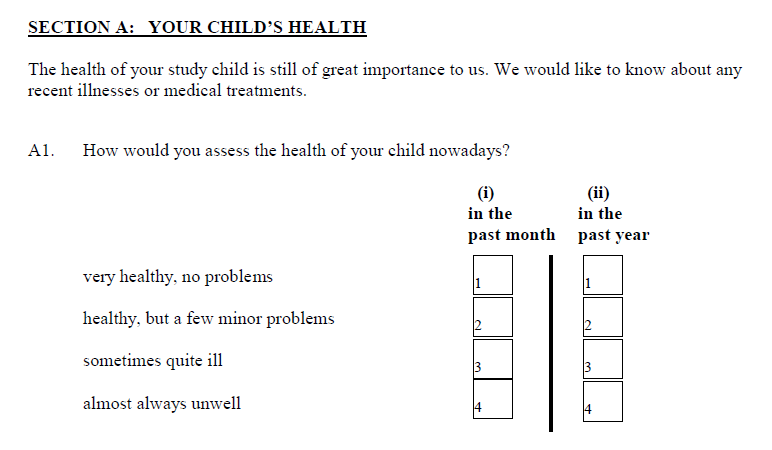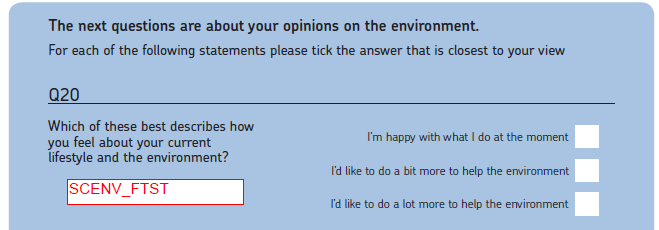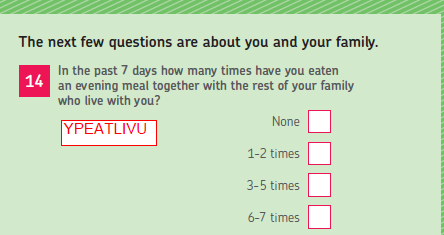This page is still under construction.
Key considerations
- More than one statement can be added
- Statements are positional and not owned by questions
Text within a questionnaire becomes a statement when it does not fulfill the criteria of becoming any of the other elements (sequence, instruction or condition) and does not provide any context to be part of the question text. Statements can be found throughout the questionnaire; at the beginning, middle and end and they are used for both questions and sequences.
Statements are independent of questions and are control constructs. Conrol constructs are concerned with their positioning within the questionnaire. The statements position is dependent upon where the text appears in the questionnaire; for example, if it appears before a question then it needs to be input before the question on Archivist and if the statement text is after a question in the questionnaire then it needs to be input after the question, see Example 1.
Statement labels are also used to understand their position within the questionnaire. In order for statements to have a unique label they need to refer back to either a question or a sequence. Statements are labelled with the prefix ‘s_intro_…’. If there is a statement connected to an entire section within a questionnaire then it always needs to be numbered; even if there is only one. For more on labelling statements please see constructing label (IDs) for more information.
Example 1 Questionnaire: My Son/Daughter’s Health and Behaviour 2000 (ALSPAC) question A14
Questionnaire layout:
Archivist view alspac_00_msdh:
Now see example 2 for when the statement is not just specific to a question alone but to an entire section and is labelled and positioned accordingly in Archivist:
Example 2 Questionnaire: My Son/Daughter’s Health and Behaviour 2000 (ALSPAC) Section A
Archivist view: alspac_00_msdh:
Some questionnaires have a lot text at the beginning of a questionnaire explaining to the interviewee how to complete it, as shown in Example 3. In Archivist you will see that five seperate statements have been entered. This is because when you have a series of statements they are entered seperately in Archivist where a carriage return is used in the questionnaire layout.
Example 3: Questionnaire: Final Interview with Mother 1961 (NSHD) s_intro_vi to s_intro_x
Questionnaire layout:
Archivist view nshd_61_iwm:
Some questions contain text which can be split into both statements and question text.
Example 4 Questionnaire: Food and Things 2004 (ALSPAC) Section B
Where the text is continuous, deciding which parts are included in the question text and which parts are included in the statement can be tricky, see Example 4 questionnaire layout. As the first paragraph contains text regarding what information the interviewer would like from the interviewee it is input as the question text. However as the second paragraph does not provide such information and it also does not contain text which the first paragraph is contextually dependent on, it is therefore entered as a statement. Note also that as the question text cannot be seperate or split from their response domain, the statement will therefore appear after the question in the Archivist view and not just after the question text as shown in the questionnaire layout.
Questionnaire layout:
Archivist view alspac_04_fat:
Statements can also be mistaken for a sequence like in example 5 but is entered as a statement because it does not fulfill the criteria of a sequence; of having a clear start and end.
Example 5 Questionnaire: Adult Self completion 2008 (US) s_q20 and s_q20_i
Questionnaire layout:
Archivist view us1_asc
Some statements have text that is contexually important information which is then repeated within the question such as in Example 6. This example shows a simple sentence before a question explaining what the next questions are about. The important context of ‘you and your family’ is repeated in the question.
Example 6 Questionnaire: Adult Self completion 2008 (US)
Questionnaire layout:
Archivist layout us1_ysc
Finally some questions contain more than instruction which is not possible to input into Archivist. Therefore only one instruction is input and the remaining are entered as statements as shown in example 7:
Example 7: University Questionnaire 1964 (US) question 47_i-xii
Questionnaire layout:
Archivist view nshd_64_cmu













